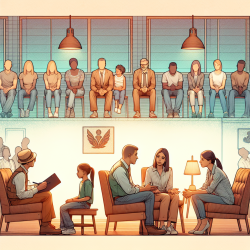As the field of speech-language pathology continues to evolve, the integration of technology into therapeutic practices has become increasingly important. A groundbreaking comparison between two computerized speech training systems, Speech Viewer by IBM and ISTRA (Indiana Speech Training Aid) from Indiana University, offers valuable insights for practitioners looking to enhance their therapeutic toolkit.
Speech Viewer and ISTRA were developed to provide visual feedback for auditory deficits, a concept that has been explored since the 1950s. However, these systems employ modern computer graphics and interactive games to engage users, making speech therapy more appealing, especially to younger populations.
One of the key findings from the comparison is that these systems cater to different clinical needs and populations. Speech Viewer is particularly suited for younger children or those with severe impairments. Its game-like interface focuses on fundamental aspects of speech production, such as voicing contrasts and vowel quality, using colorful and captivating visual feedback. For instance, in one of its modules, a correct vowel production might cause an animated monkey to climb a tree, offering immediate and motivational feedback to the child.
On the other hand, ISTRA targets older children who can read simple words and focuses on refining speech production at the level of whole words and sentences. It provides feedback on speech quality through a game interface, adjusting the difficulty level automatically based on the user's performance. This adaptability makes ISTRA particularly useful for sustained drill work on specific phonemes or words.
Despite their differences, both systems have shown potential in complementing traditional speech therapy methods. They offer a unique way to engage clients in repetitive drill exercises, which are crucial for mastering specific speech targets. Moreover, the visual feedback provided by these systems can help bridge the gap for clients who struggle with auditory feedback alone.
However, it's important to note that these computerized systems are not intended to replace human intervention but rather to enhance it. The clinician's role remains central to selecting appropriate targets, interpreting data, and providing the personalized guidance that technology alone cannot offer.
For practitioners interested in incorporating these tools into their practice, understanding the specific features and clinical applications of each system is key. While Speech Viewer might be more accessible for beginners and younger children, ISTRA offers advanced features that can benefit older children and adults, particularly those working on more complex speech targets.
In conclusion, the integration of computerized speech training systems like Speech Viewer and ISTRA into speech therapy practices can offer significant benefits. By leveraging these technologies, clinicians can provide engaging, effective, and personalized therapy that meets the diverse needs of their clients.
To explore the original research and deepen your understanding of these innovative systems, please follow this link: Comparison of Two Computerized Speech Training Systems: Speech Viewer and ISTRA.










